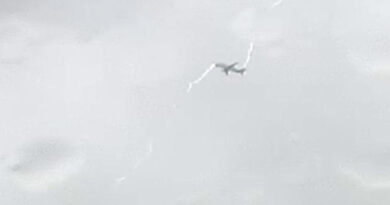Rare pictures from old zoos

Rare pictures from old zoos
Humans have always been fascinated by the animal world around them. In ancient Egypt, for instance, kings used beasts to demonstrate their wealth and power. Later, menageries, circuses, and finally zoos gradually entered society. While today’s zoos have adopted missions centred around conservation, those of the last century focused more on entertainment. Here are captivating images of zoos from days gone by.

Bern bear pit
Bern’s affinity for bears is not new. In addition to adorning this Swiss city’s coat of arms, imposing bears have always been proudly displayed in the heart of the city. From 1857 to 2009, Bern was home to a famous bear pit that delighted young and old alike. In 2009, the bear pit was replaced by a nearby bear park.

Emblematic bear
For 152 years, visitors from all over the world came to Bern, Switzerland, to see the bears kept in this pit. These animals have always been the pride of the city’s residents.

Very old zoo building
This beautiful pair of giraffes was photographed in 1885 at the London Zoo, 57 years after its doors first opened. The giraffe enclosure is also the oldest zoo building still used for its original purpose.

Celebrated chimpanzees
Until 1972, the chimpanzee tea party was one of the London Zoo’s most popular attractions. For several years, the apes gathered around a table to entertain visitors with a reenactment of the English tradition.

First exotic animals
Before being housed at the London Zoo, many exotic and wild animals never before seen in England lived in the Tower of London menagerie. Residents included lions, elephants, and other creatures.

World War II difficult for animals
When the Second World War broke out in 1939, some of the residents of the London Zoo were transferred to another location. Rhinos, giant pandas, and elephants found refuge at Whipsnade Zoo, a facility located on the outskirts of the English capital.

Oldest scientific zoo
As the oldest scientific zoo in the world, the London Zoo has accumulated many amazing stories about its numerous four-legged residents. The lynx, a favourite with visitors, is one example. In 2001, the zoo’s staff caught one of these felines roaming the garden of a private property.

13th-century polar bear
Polar bears have long been among the large mammals at the London Zoo. In fact, a polar bear resided in the Tower of London menagerie in 1252.

Origin of the word “zoo”
The word “zoo” was first used in England in the late 19th century to refer to a zoological garden.

Animal collections
Nomadic peoples have always kept some living animals with them. With the rise of Egyptian and Chinese civilizations between 3000 and 1000 BCE, animal collections began to grow.

Small-screen star
In 2013, a chimpanzee named Louis (left) died at the age of 37 at Twycross Zoo, located in the United Kingdom. A true star of the small screen, Louis helped popularize PG Tips brand tea in the 1970s and ‘80s.

Fatal incidents
Large predators, like polar bears, have killed staff members in zoos of the past. Two such incidents occurred at the former Jardin zoologique du Québec, where a keeper and doctor were killed by polar bears in the 1930s and 1950s.

Monkeys or pirates?
Intelligent and agile, monkeys have quickly become the main attractions at many zoos. In the United States, the monkeys at Mesker Park Zoo pretended to be pirates in a miniature replica of Christopher Columbus’s ship for nearly 50 years.

Animal welfare
In Europe, the first shifts in opinion against animal captivity occurred between 1960 and 1970. Zoos began to create more natural environments for their animals during these years.

Zookeepers
Unlike today, zookeepers in the past were often young Caucasian men who had no experience with animals. Happily, the profession has since changed for the better!

Polar bear breeding
The Bremerhaven Zoo (Zoo am Meer Bremerhaven), in Germany, has been trying for almost 90 years to breed and raise polar bears in captivity. Its efforts were delayed, though, by the outbreak of World War II and other events.

Black swans in captivity
Native to Australia and Tasmania, black swans have been kept in captivity in the United Kingdom for over 200 years. They used to be seen as pets. With few exceptions, attempts to re-naturalize them at the turn of the 20th century failed. Most black swans can now only be seen in zoos.

Superstars of the animal world
Animals that performed in zoos were once considered stars. The media eagerly published articles on chimpanzees, lions, and elephants. Even their deaths made the news.









